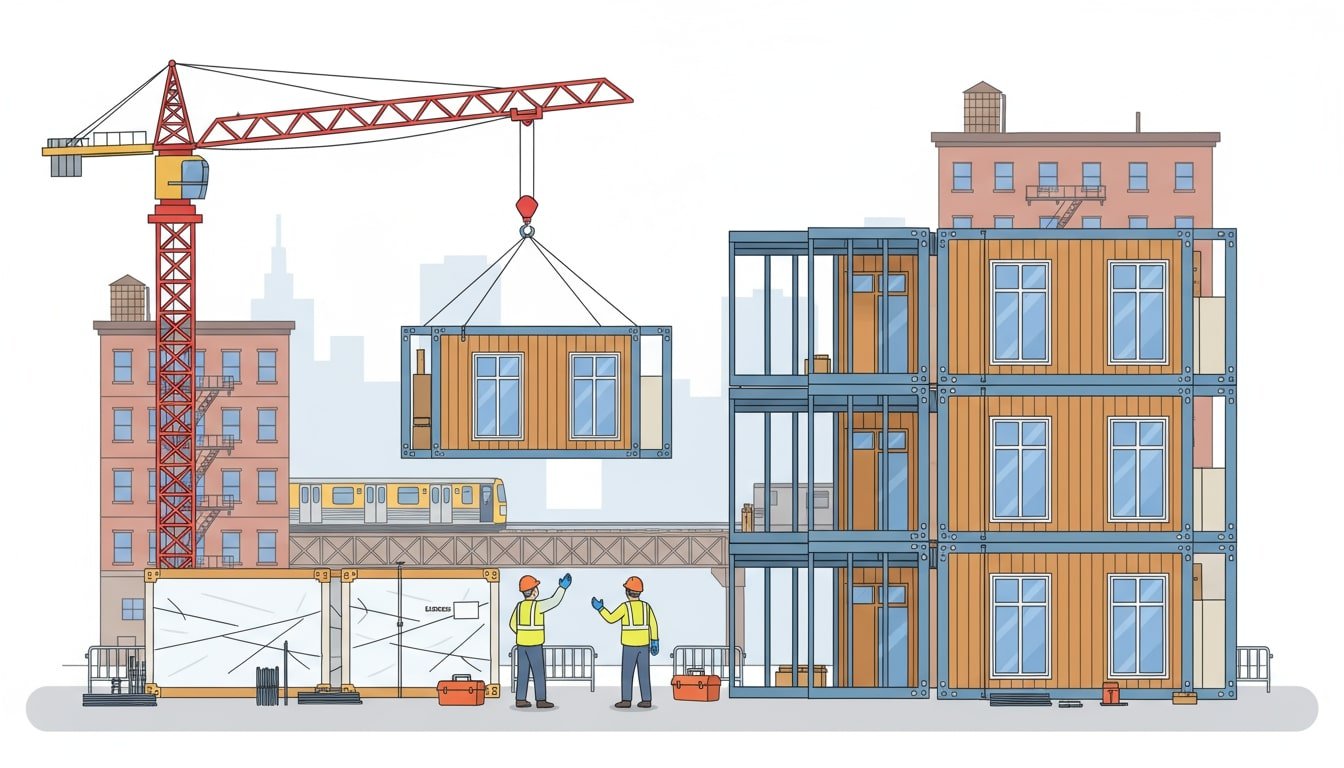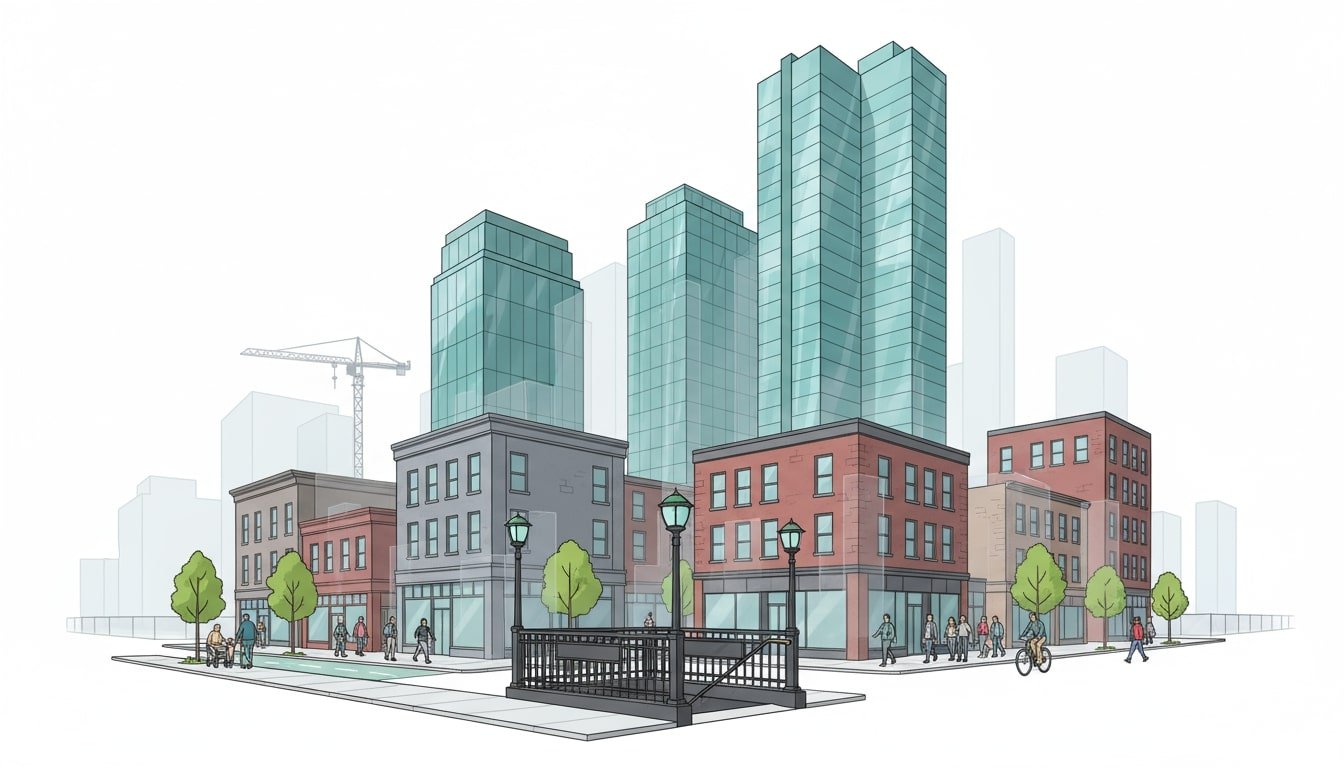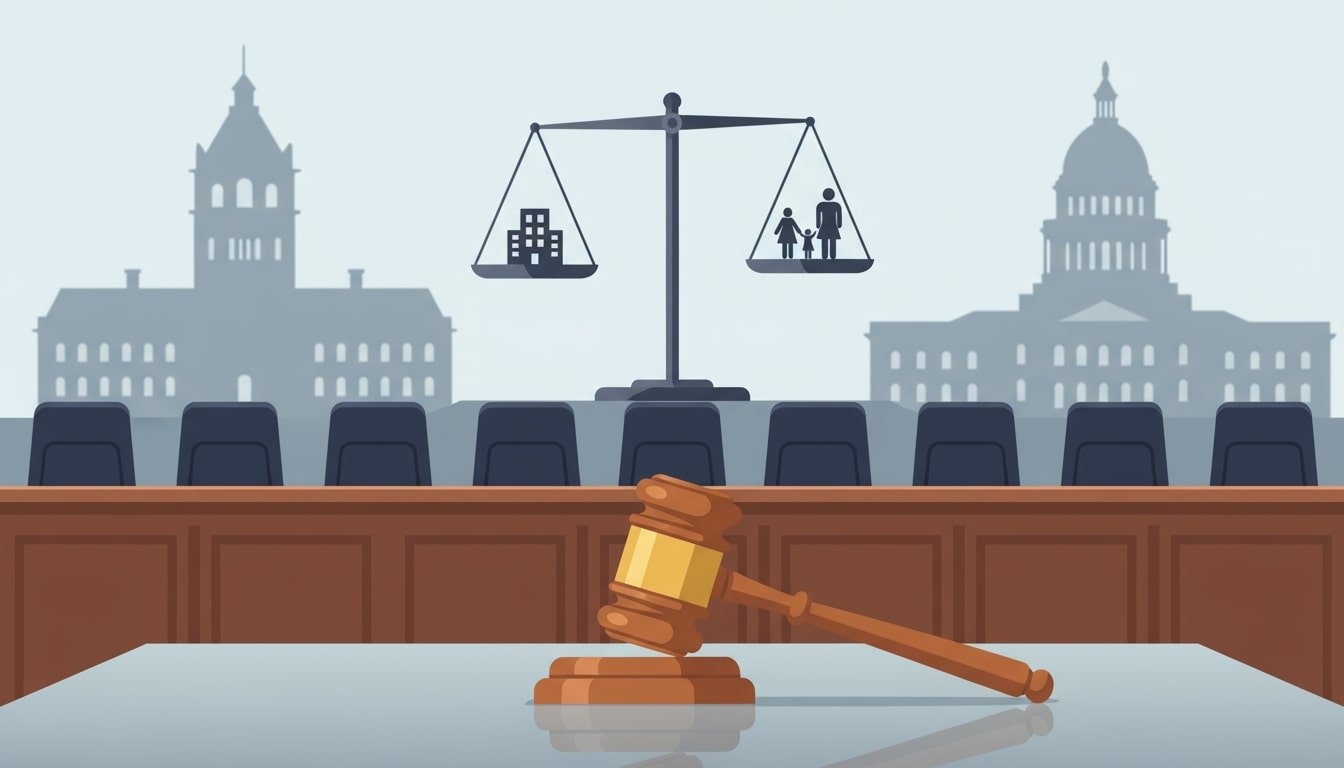Last Updated on November 12, 2025 by teamobn
New York City entered 2025 with rents high, vacancy tight, and patience thin. Voters chose a mayor who promised immediate relief for stabilized tenants and a faster path to new homes. Zohran Mamdani’s plan pairs a rent freeze with a production agenda that leans on zoning reform and city financing. Success depends on how the Rent Guidelines Board is staffed, how quickly approvals move, and how costs get tamed. 
Contents
Key Takeaways
- New York faces record-tight vacancy, elevated rents, and rising cost burdens that demand both immediate relief and more homes.
- Mamdani’s agenda pairs a rent freeze for stabilized tenants with zoning reform, city financing, and prefab delivery to expand supply faster.
- Results hinge on who sits on the Rent Guidelines Board, how quickly approvals move, and how core operating costs get tamed.
The State Of NYC Housing In 2025
New York City enters late 2025 with a rental market that’s historically tight. The 2023 Housing and Vacancy Survey measured a net rental vacancy rate of 1.41%, the lowest since the late 1960s. Vacancy is even tighter in the rent-stabilized stock, leaving little slack to absorb shocks.
Rents remain elevated across the city. Manhattan’s median rent held around $4,800 in May 2025, and citywide medians hovered in the mid-$4,000s by midsummer. Bidding wars and short time-on-market reinforce how little inventory is available. More than half of renter households are cost-burdened, with the burden landing hardest on lower-income tenants.
The production pipeline isn’t keeping pace with demand. A surge of prior permits helped push 2024 completions to roughly 34,000 homes. New permits fell to about 15,600 in 2024, the lowest since 2016, signaling a thinner pipeline for future years.
Rent-stabilized apartments remain a backbone of affordability, with just under one million units citywide. Building finances improved in 2023 as income rose faster than costs in many areas, yet about one in ten stabilized buildings still posted negative net operating income. That mix points to ongoing pressure in older stock and the risk of deferred maintenance when revenues lag costs.
This combination of record-low vacancies, high rents, heavy cost burdens, and a thinning permit stream sets the stakes for near-term rent relief and a push to expand supply. Choices made in 2025 about Rent Guidelines Board policy, zoning capacity near transit, and targeted subsidies will shape both stability for tenants now and the pace of new homes in the years ahead.
Why Building New Homes Is The Durable Fix
Rent freezes can steady housing costs for those already in regulated homes. They don’t solve the underlying shortage that keeps rents high for everyone else.
Evidence from large cities shows that tighter controls protect current tenants but also shrink the rental supply as owners convert or redevelop, which puts pressure on the unregulated market. The path to lasting affordability runs through building more homes where demand is strongest and making stalled apartments usable again.
A build-first strategy should pair near-term tenant relief with faster approvals, as-of-right capacity near transit, and financing that turns paper plans into keys in doors. That mix opens the market to newcomers, reduces bidding wars, and eases the load on the Rent Guidelines Board by aligning costs and revenues in older stock. It also lets preservation dollars focus on buildings that truly need help rather than trying to backfill a structural shortage with annual rent decisions.
Prefabricated and modular construction can help New York reach its numbers faster. Factory-built components shorten on-site time, reduce weather delays, and improve quality control, which can bring homes online months sooner and at lower total cost when projects are designed for manufacturing from day one.
City housing officials already flag modular as a tool to deliver affordable units faster in some cases, and New York has real precedents that prove the approach is viable in tight urban sites. With clear standards, stable procurement, and a small network of regional manufacturers, modular can become a dependable lane for supportive, mixed-income, and market-rate housing, especially on public land and near subway corridors.
What Zohran Mamdani Can And Can’t Do On Rents
As of November 10, 2025, Eric Adams is the incumbent mayor. Mayor-elect Zohran Mamdani takes office on January 1, 2026. New York City’s rent levels for stabilized apartments are set each year by the independent Rent Guidelines Board, not by the mayor’s signature or an executive order. That structure is why any rent freeze lives or dies on the votes of the nine-member board.
Here’s what City Hall can do. The mayor appoints all nine Rent Guidelines Board members and designates the chair. A new administration can replace members whose terms have expired and steer the board’s priorities through appointments, staffing, and the research agenda.
Past mayors have used this leverage to press for minimal or zero increases, and the board has the authority to set one-year and two-year lease adjustments at zero if a majority agrees.
Here’s what City Hall can’t do. The mayor can’t unilaterally freeze rents, override a board vote, or set rules for market-rate apartments. The legal framework for rent stabilization sits in state law, administered by New York State Homes and Community Renewal, so changes to how the system works require Albany. Even with strong mayoral preferences, the board can and does act independently.
What does this mean for 2026? The current board approved increases for leases starting in late 2025, indicating that the RGB will adjust its own reading of costs and data. A Mamdani freeze will hinge on reshaping the board and securing five votes. The promise is politically potent, but delivery runs through appointments, public hearings, and the board’s formal vote calendar.
Build More, Break Less: Mamdani’s Pro-Housing Agenda
Here’s Mamdani’s pro-housing playbook that squares tenant relief with more homes. It refines a rent freeze, rewards stewardship, fixes hardship relief, upzones transit, and funds new lines through value capture.
- “Pay for” a rent freeze by cutting operating costs rather than ignoring them.
- Treat the Rent Guidelines Board (RGB) as a cost regulator that aligns rent adjustments with actual expenses.
- Focus on solvency for the roughly 10% of regulated buildings with costs at or above income.
- Lower core costs through fairer Class II property taxes, insurance reform, and fixes to scaffold and façade rules.
- Restore stronger rehab incentives like a beefed-up J-51-R tied to LL97 upgrades and code compliance.
- Tie rent guidelines to building quality using AEP as the filter. Chronic violators get no increases.
- Fix hardship relief at DHCR with prompt processing and increases sized to restore solvency.
- Consider modest vacancy resets to keep revenues aligned with costs without big in-tenancy hikes.
- Upzone transit corridors by matching zoning to subway capacity. Treat the subway map as a capacity map.
- Target R8 within a quarter mile of stations and R7 within a half mile, with very high density on parcels at entrances.
- Use inclusionary housing everywhere these upzonings land. Track where the 485x 99-unit rule suppresses scale and publish the lost units.
- Build new trains with value capture. Create split-rate land value tax districts around MTA projects.
- Follow the 7-Train extension model and capture uplift to fund lines like Utica Avenue or the Interborough Express.
- Use those lines to anchor the next wave of transit-oriented, mixed-income housing in high-opportunity areas.
Conclusion
New York heads into 2026 with rents high, vacancy tight, and a mandate to act. The promise combines a rent freeze for stabilized tenants with a faster build program that leans on zoning reform and city financing. Delivery hinges on how Mamdani staffs the Rent Guidelines Board, how quickly approvals are processed, and how core costs are managed.
FAQ: Zohran Mamdani’s NYC Housing Measurements
- What did NYC voters approve on election night?
- They passed three housing measures designed to speed affordable projects. The package fast-tracks approvals, simplifies zoning review, and creates an appeals board for rejected proposals. It sidesteps routine political bottlenecks so citywide needs don’t stall in one district.
- How severe is the housing crisis right now?
- Only about 1 in 100 apartments is available to rent, and the vacancy rate sits near 1.4%. The average three-bedroom home costs about $1.8 million citywide. Roughly half of households are cost-burdened, and about 154,000 public school students are homeless.
- Will these changes bring back massive public-housing towers?
- No. Nonprofit or for-profit developers will build most projects. Only a portion is taxpayer-financed, and those buildings are typically owned and operated by nonprofits, not the city, as individual projects rather than huge complexes.






